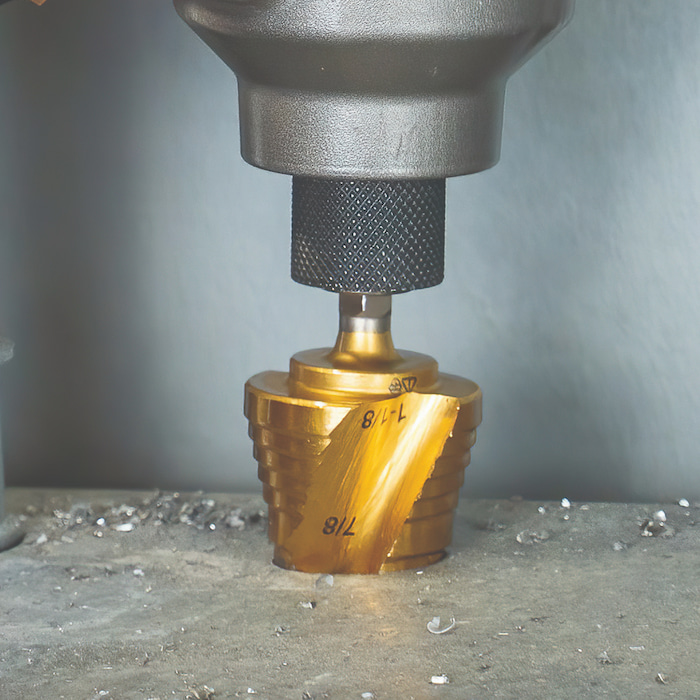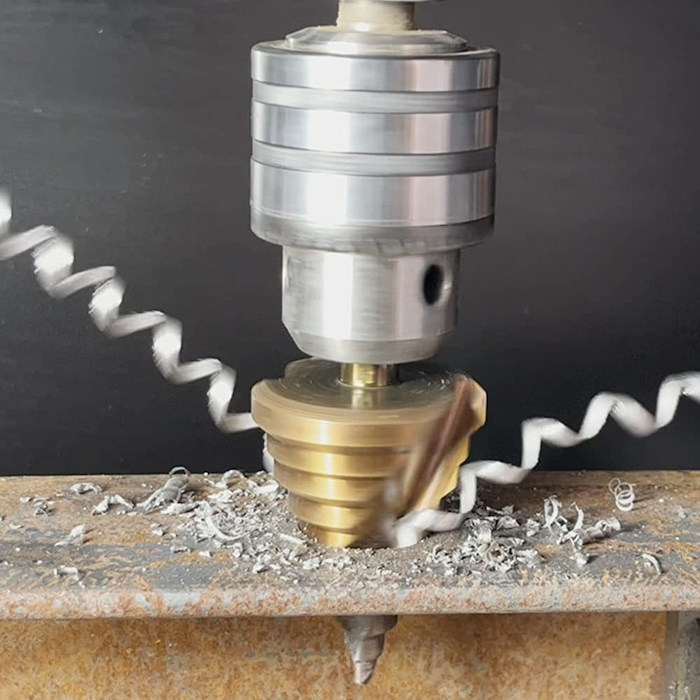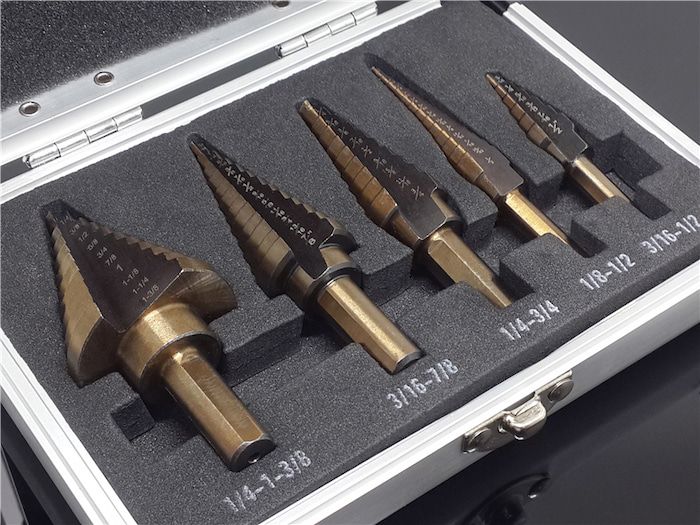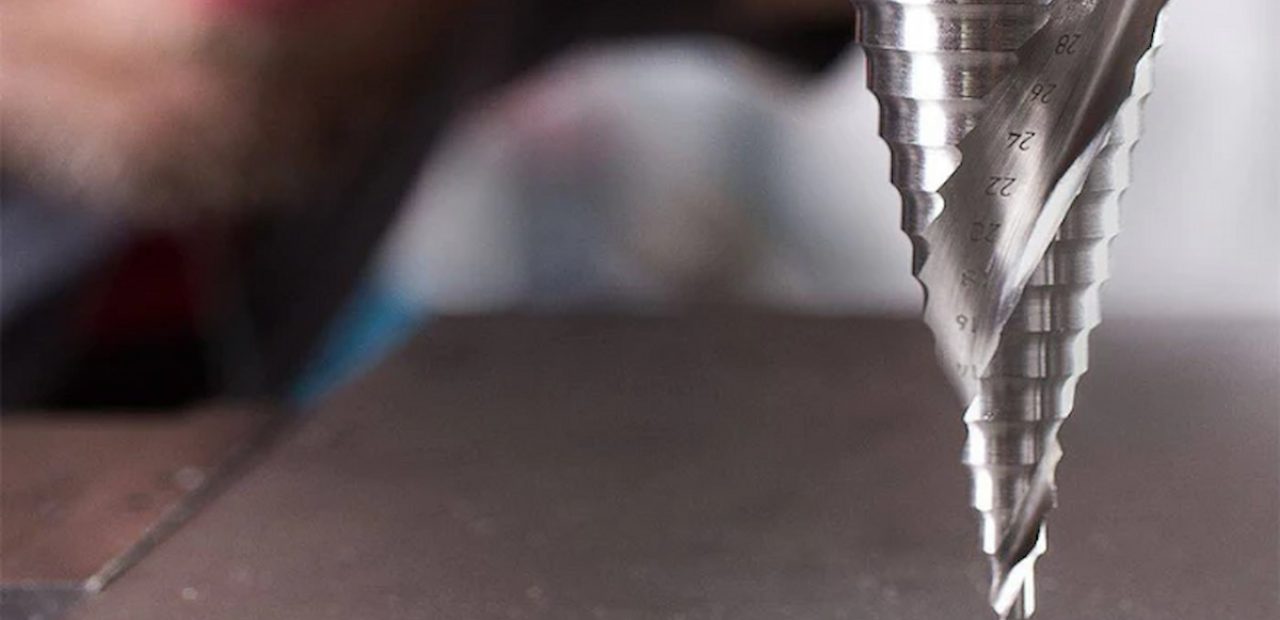Step Drills and Step Drill Bits: Easy Drilling Operations for Outstanding Results
How you ever been confronted with holes drilled in a substrate, only to realize that they needed to be chamfered, or bored out to a larger diameter? You’re not alone if you have, and it’s the last thing you want when efficiency is crucial.
In fact, it’s a surprisingly common occurrence with tradies and metal fabricators, and it can quickly turn into a time consumer that’s rife with problems. This is especially true in high volume, multi-process environments where performing multiple drill bit changes during a single operation, or using oversized bits to swivel out larger holes can result in a costly loss of productivity or irreparable damage to the substrate.
If the constant need to make bit changes is putting a bottleneck on your or your business’s workflow, now’s the time to consider investing in the kinds of drilling consumables that are going to give you an immediate edge on output, while also saving you time and money over the long term.
Contents
Make all Your Drilling Operations Easier With Step Drill Bits

Experienced engineers and craftsmen know that when it’s necessary to either drill or bore out multiple-sized holes in metal work and plastic substrates, that premium HSS step drills are the right consumables for the job. Step bits not only prevent drilling processes from getting bogged down with momentum-ruining bit changes, but their self starting attributes allow users like sparkies, sheet metal workers, and fabricators to drill large numbers of holes without the need to create corresponding numbers of pilot holes.
In addition to eliminating the need to switch between various sizes of bits, the overall shorter length and fluting of a step drill bit allows you to:
- Drill any size hole faster than can be done with a twist-type bit;
- Work in closer confines than are possible with any other type of bit; and,
- Drill and chamfer holes with laser-like precision.
Regardless of whether they’re used with handheld drills or drill presses, step bits are the perfect consumable for quickly and cleanly widening or re-boring existing holes. The holes also don’t require any beveling or de-burring after they’re been drilled, making step bits perfect for primary operations and rework processes where accuracy and time are critical.
Getting the Best Results by Choosing the Right Fluting

You’ll find step drills for sale in a full range of metric and fractional step sizes, and designed with up to 14 steps as well as a choice of either round or flat-surfaced shanks. More importantly, however, the bits are forged with either spiral or straight fluting.
- Spiral fluting. Spiral fluted bits with up to 135° split point angles, pull at the substrate and effectively force the evacuation of chips, shavings, and other swarf material that can cause a borehole to become clogged and allow excessive heat to build up. Spiral flutes are great for thicker substrates like steel, stainless steel, copper, and aluminium.
- Straight fluting. Straight fluted bits don’t pull at the substrate, allowing them to be used with thinner substrates that would otherwise be prone to warping or bending from either the twisting action or heat buildup. Straight flutes are optimal for lighter weight substrates such as some types of copper and aluminium, as well as brass, plastics, and laminates.
Ideally, with the right drill speed, either type of step drill fluting is capable of producing a superior quality hole. They’ll even work on plywood and plexiglass, making them the go-to bit any time a bore needs to be precise, and there’s no margin for damaging the substrate.
Hardness Coatings That Give Step Drill Bits the Edge

Fabricators invest heavily in keeping their drill bits sharpened until they it’s time for them to be replaced, and step bits in particular require special sharpening tools to keep their tips and flutes their absolute sharpest. The advantage, however, is that you can buy step drill bits with Titanium Nitride (TiN) and Titanium Aluminium Nitride (TiAIN) coatings that give them longer lasting edge protection than you’ll find on uncoated, or oxide-coated HSS bits.
TiN is a yellowish ceramic surface coating whose attributes include:
- A surface hardness of 81HRC on the Rockwell scale;
- Increased wear resistance by up to 30% over ordinary steel bits; and,
- Heat resistance up to 600°C.
TiAIN is a violet-grey ceramic coating of Aluminium Oxide (Al2O3) developed from TiN that offers:
- An increase in surface hardness to 85HRC on the Rockwell scale;
- An increase in heated hardness resistance to 800°C; and,
- A 3- to 4-fold increase in wear resistance over the original hardness.
Not only is TiAlN the best choice for high temperature drilling, it’s a coating that’s distinguishable for its regenerative properties. When worn down, the coating’s Al2O3 layer is able to reform, allowing TiAlN-coated step drill bits to retain a state of perpetual edge protection even after the heaviest use. They almost never down, which makes them the cost-conscious alternative to sharpening or replenishment.
Ensuring Step Drills are a Part of Your Tool Box
Although having the ability to bore and deburr in a single process is one of the clear advantages of using step drills, bits that lack the overall length to drill though thicker substrates can sometimes present a problem.
With step bits, this is ordinarily overcome by drilling the substrate to the desired diameter on one side, flipping it over, and then drilling it to the same diameter on the opposite side. It’s a workaround, however, that’s only useful if the thickness of the substrate isn’t more than twice the depth of the diameter that the hole needs to drilled to.
Instances like this may be few and far between, but what it illustrates is that while step bits can’t always be the first choice for thicker substrates, that they’re still uniquely beneficial as a part of a balanced tool box for a range of drilling, boring, and chamfering tasks that ordinary twist-type bits simply aren’t optimized for. Ensuring that you always have a selection of cone-shaped, and screw-type step drill bits is going to give you the flexibility to accomplish any drilling job.
The Final Word
At the end of the day, step bits are the logical choice for eliminating the wasteful practice of persistent bit changes as well as the risks from using incorrectly sized bits to perform tasks that they weren’t designed to do. In fact they add value to the work process, and give tradies and fabricators a level of flexibility that would otherwise require the use of two or three separate tools.
Premium quality HSS step drills are must-have consumables for businesses and DIYers who want to keep their costs down and their productivity up. You’ll be amazed by how quickly they can pay for them themselves, and today needs to be the day that you give them a try.

















